Enduring mystery of New York icon with Welsh owner
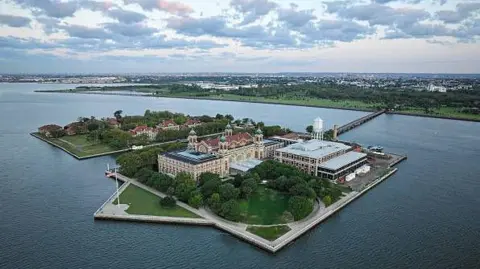 Getty Images
Getty ImagesThe Statue of Liberty and Ellis Island in New York harbour remain two of the world's iconic sites - and sights.
Ellis Island gained its historic status as the first place millions of immigrants arriving in America would have set foot on US soil.
And remarkably, two American men of Welsh origin with the same name can lay claim to being the founder of Ellis Island.
But all these years on, the question remains: which Samuel Ellis was it?
During the 19th and 20th centuries Ellis Island was the main processing centre for more than 12 million immigrants arriving from Europe.
The Statue of Liberty, which was gifted to New York by France in 1886, stands on one neighbouring island of the archipelago.
As the immigration hub grew, the three islands were expanded by artificial land-reclamation with spoils from subway and railroad excavations on the mainland.
Before that point, however, a Samuel Ellis from Wrexham had bought the rocky outcrop which came to be known as Ellis Island. That was at some point around 1774-75.
The problem is that there were two Samuel Ellises who seemed to have had roots in Wales.
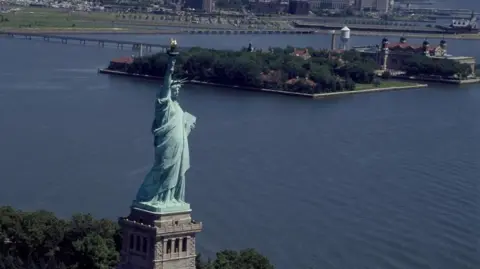 Library of Congress
Library of CongressTwo men with that name are recorded as living in the city around 1780, and the wives of both were called Mary.
One was a butcher who lived in Greenwich Street in the Lower West Side.
The other was a merchant in Manhattan, who owned a farm in New Jersey.
Both could have possessed the means to have bought an island which was, in 1774, nothing more than a fruitful fishing spot and a picturesque picnic site.
But as a fledgling Big Apple was only just finding its feet, record-keeping was not all it might have been.
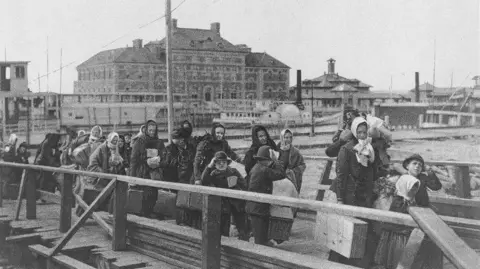 Library of Congress
Library of CongressMatt Housch, curator and historian for the Statue of Liberty National Monument and Ellis Island said: "There's even more confusion, as both of the likely suspects married women called Mary.
"Both would have likely been fairly wealthy to have afforded the trip to America so early, so both are contenders to be the 'real Samuel'."
The "correct" Samuel, according to Welsh records, was born in Wrexham in 1733.
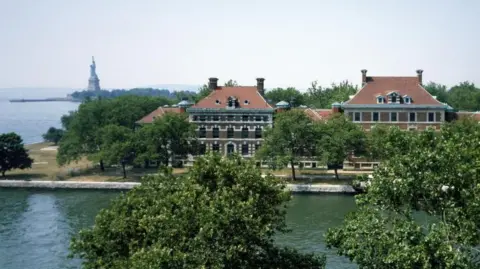 Library of Congress
Library of CongressHe appears to have emigrated to New York in about 1750, but then the trail runs cold.
Mr Housch added: "The earliest record we have for Samuel Ellis is a 1775 newspaper article describing how a fishing boat had run aground on Ellis Island, recently purchased by Samuel Ellis.
"Formally the three islands - one of which is now home to the Statue of Liberty - were known as the Oyster Islands, because of their excellent fishing."
Clearly, the New York in which both men would have arrived was a very different city from today.
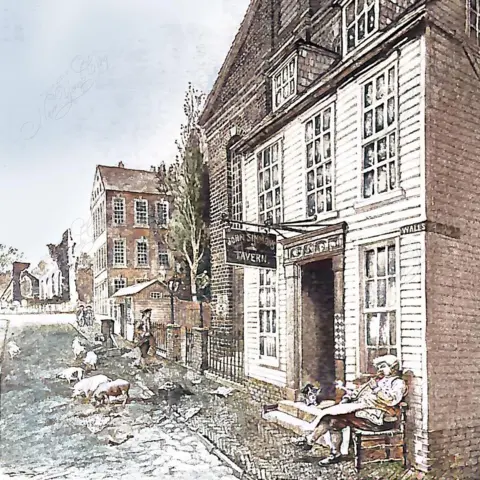 Harry Fenn/ History 101.NYC
Harry Fenn/ History 101.NYC"It was mostly a trading post, largely cut off from the interior of America to the west, and predominantly exchanging goods with Europe, the Canadian territories to the north and the West Indies to the south," said Mr Housch.
It would have been very multicultural, with British, Dutch, French and Native Americans... and sadly there would have been slave trading there, though we don't know whether either Samuels were involved in that.
"We know both signed a petition of loyalty to Britain during the War of Independence, but that wouldn't have been uncommon for merchants hoping to keep trade with both sides."
One of the two Samuels established a tavern on the island for day-trippers and fishermen.
Seemingly it was unprofitable, however, as by 1785 Ellis Island was once again up for sale.
"The advert in the 'Loudon's Packet' [newspaper] is one of the four solid documents we have to link one of the Samuels to the island, the final [one] is their last will and testament."
Whichever Samuel died in 1794, he bequeathed the plot to a yet-to-be-born grandson to one of his three daughters, on the proviso that they named him Samuel.
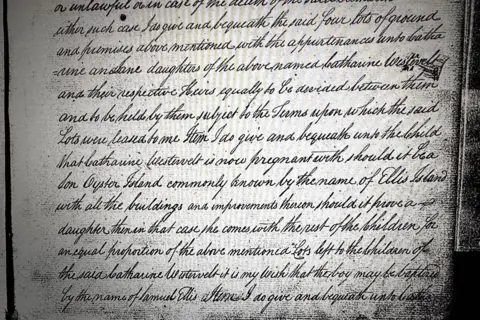 New York, US Wills and Probate Records
New York, US Wills and Probate RecordsIt is thought that a child of that name was born to Catherine Westervelt, but who died in infancy in about 1800.
The conundrum even had the US Navy perplexed in 1808, when it attempted to purchase Ellis Island to fortify its defences against the English.
"A fee of $10,000 was agreed, but nobody seemed to be too sure who it should be paid to," said Mr Housch.
"Then as now, the ancestry is a bit of a mystery."
Ellis Island ceased to be an immigration port in 1954. But while it remains central to one of New York's most iconic images, its historic ownership retains its mystery - with a Welsh twist.
